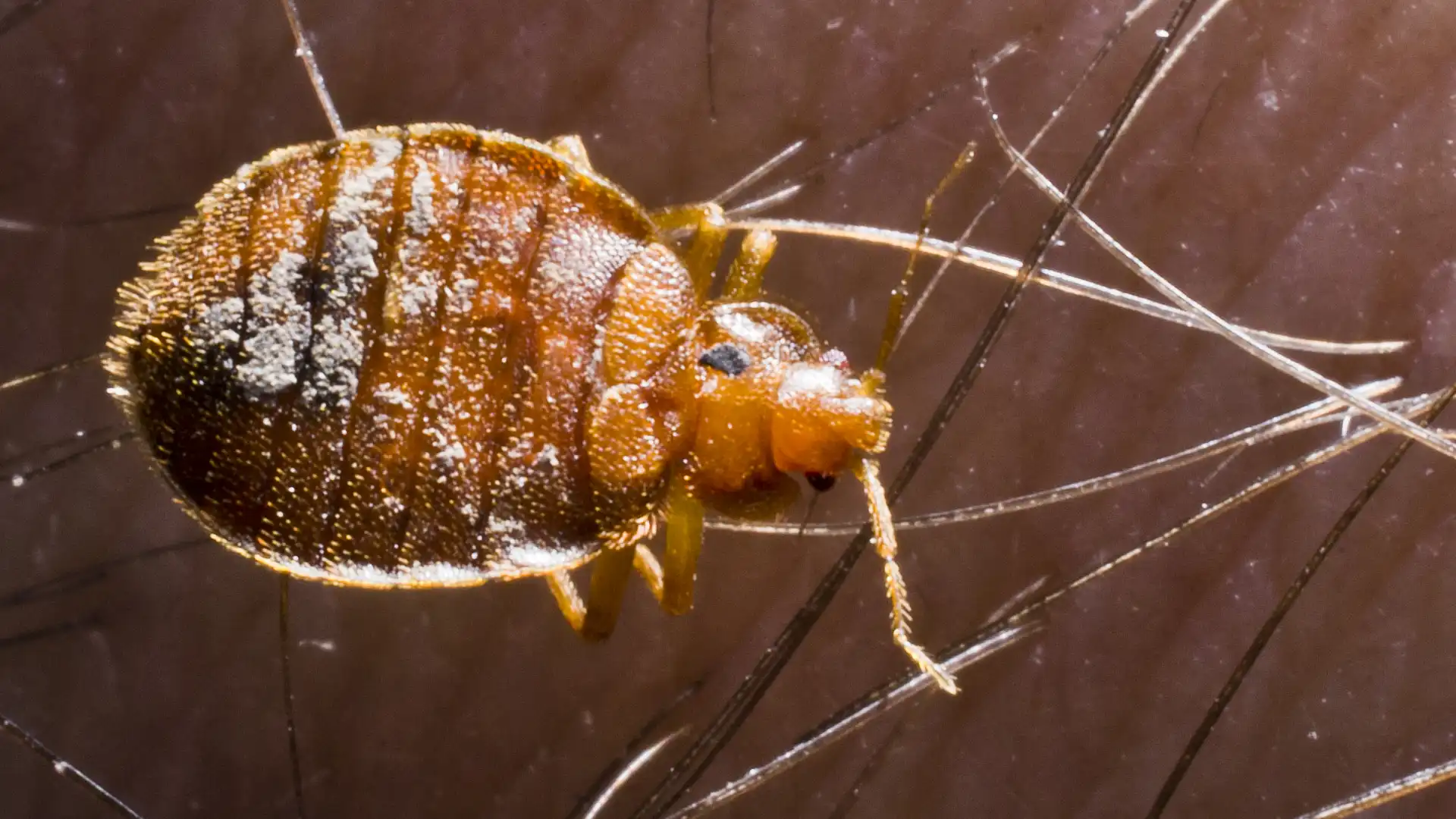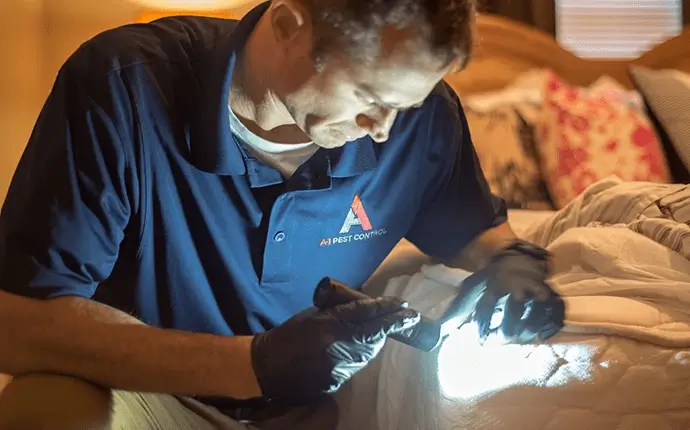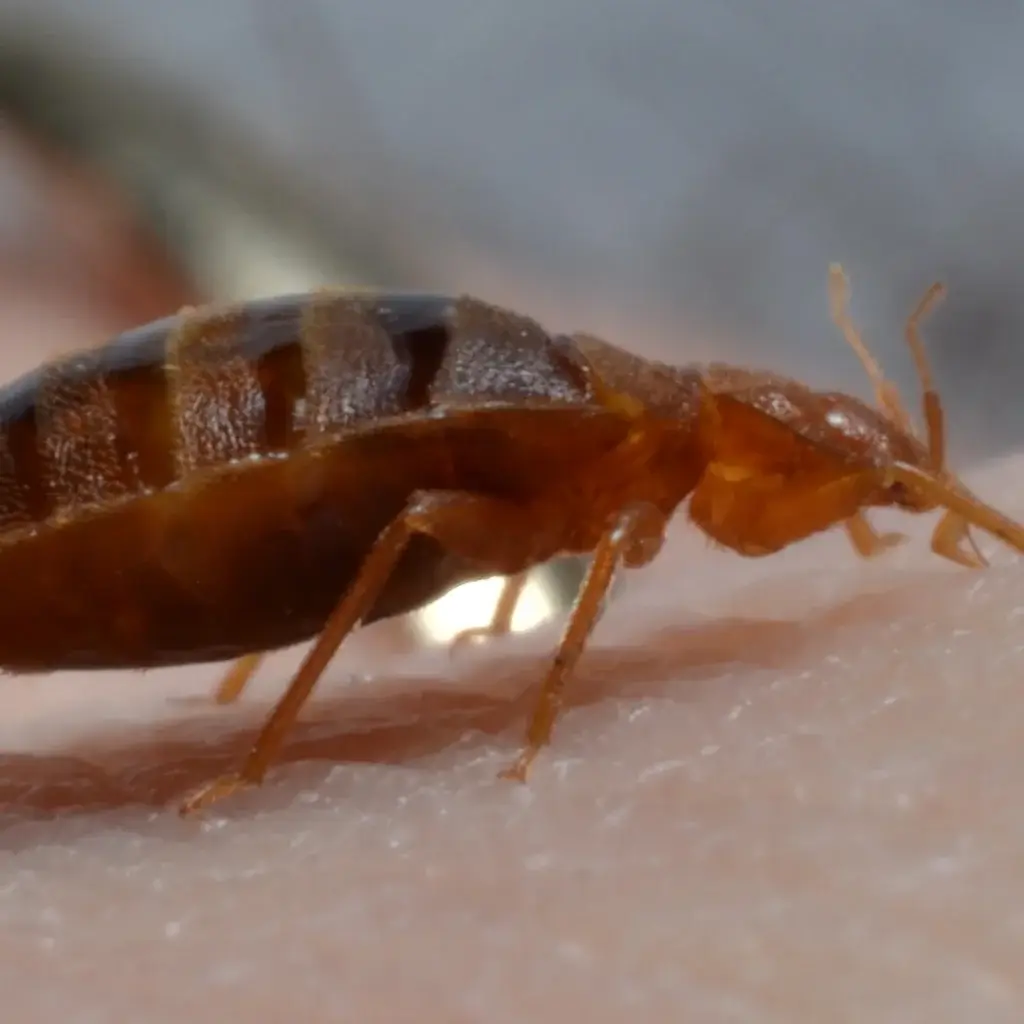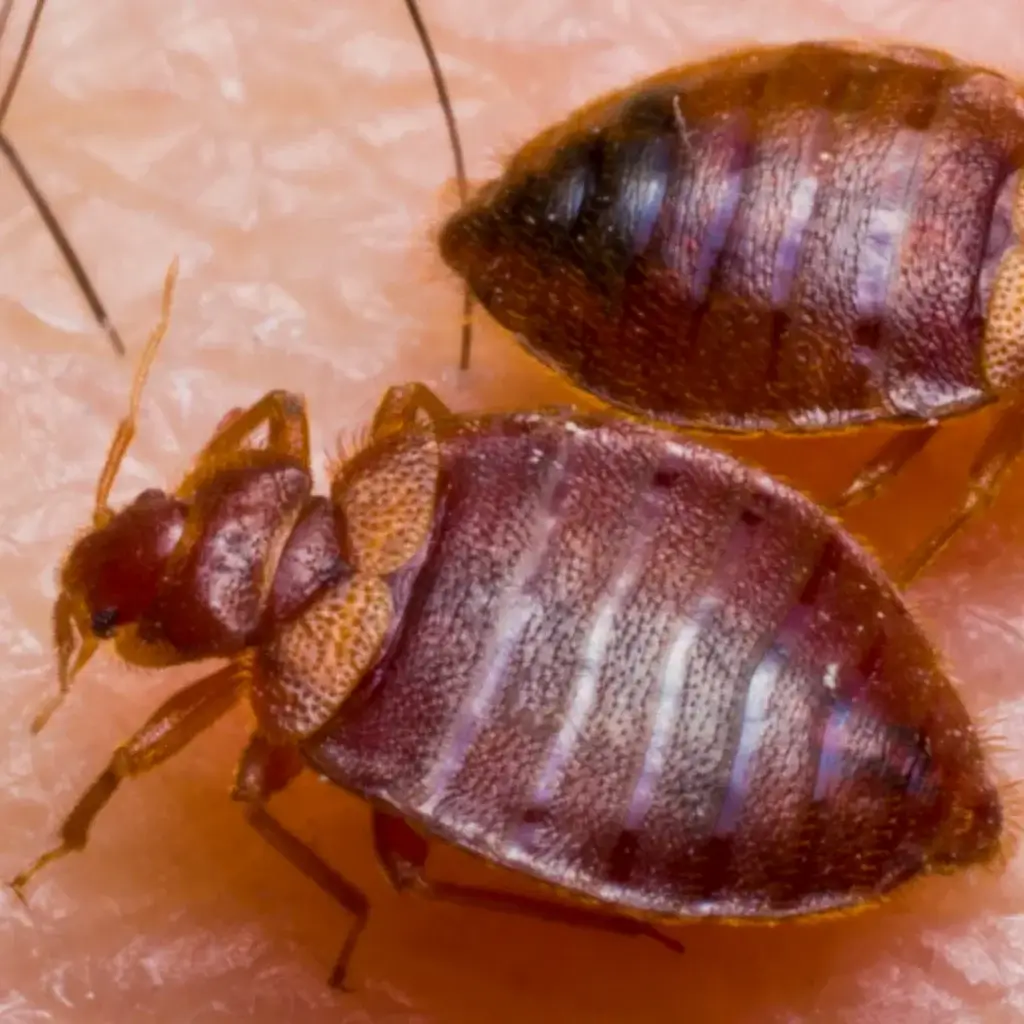

Bug Identifier: Know Your Bed Bugs
When it comes to household pests, bed bugs just might take the cake for the most dreaded. These tiny, flat bugs like to hide in sheets and towels, in drawer joints, and under appliances, only coming out for a “blood meal” every few days.
Because they are so small and mainly active at night, bed bug identification can be tricky. After decades of helping North Carolina home and business owners eliminate bed bugs from their home, A-1 Pest Control has created a guide to bed bug and mite identification—so you’ll know just what to look for and who to call if you find evidence of these blood-sucking home invaders.

Bed Bug Identification in North Carolina
There are around 90 species of bed bugs known in the world, but there are only 2 of these that feed on humans that live in the U.S.
One of these is the common bed bug, or Cimex Lectularius, is known as the cosmopolitan bed bug because they tend to be found in crowded cities, preferring apartment complexes and hotels. The other is the tropical bed bug, or Cimex Lectularius, and is typically found in locales with more tropical weather, such as in Florida.

Common Bed Bug (Cimex Lectularius)
The common bed bug can be identified by its physical characteristics, which include:
- Reddish brown in color
- Wingless
- About the size of an apple seed
- Flat bodies

Tropical Bed Bug (Cimex Lectularius)
The tropical bed bug is less commonly found in the U.S., but not totally unheard of. These look almost identical to the common bed bug, with the only real tell-tale difference being in the pronotum—the area just behind the head. On the tropical bed bug, this area is less pronounced.
The most common sign of a bed bug infestation in North Carolina, regardless of type, is the bites themselves, which are at first small, red, flat, and itchy, but may grow to be slightly larger and raised. You may also notice reddish stains on your bed sheets from the bugs being crushed, small eggs or eggshells, or pale yellow skins that have been shed.
Bed Bug Facts & FAQ
How long on average does it take to get rid of a bed bug infestation?
It typically takes anywhere from two to four treatment sessions over a period of three to six weeks to completely eliminate bed bugs, depending on the level of infestation and the size of the house. However, each situation is unique.
How fast do bed bugs reproduce?
Bed bugs can reproduce around six weeks after hatching. Once they are able to reproduce, a female bed bug can produce between one and seven eggs per day, for up to 10 days after they feed on blood.
Once the eggs are laid, it takes around 10 to 15 days to hatch.
Because of these reproduction patterns, it can take as little as two weeks for an infestation to become large enough to notice.
How much blood does a bed bug suck?
A bed bug, though small, can actually suck up to six times its body weight in one bite. Typically they latch on to feed for anywhere from three to 10 minutes.
What do bed bugs look like?
Adult bed bugs, before feeding on a blood meal are flat and oval in shape, they are about ¼ of an inch in length and are reddish-brown in color; many people say they resemble an apple-seed. After feeding their bodies will expand and become more oblong in shape and their color will changed to a more purplish red. Adult bed bugs are not winged, so they cannot fly. Bed bug eggs are small, approximately 1mm in size and are whitish in color, making them almost invisible to the human eye. Newly hatched bed bug nymphs are no larger than the head of a pin; they look similar to the adults, but are smaller in size and lighter in color. The nymphs grow and mature very quickly, shedding their exoskeleton after each feeding.
Are bed bugs dangerous?
Bed bugs are not dangerous in the sense that they are not known to transmit any serious diseases. Though many people have no reaction to bed bug bites, some do experience an allergic reaction to the bites. If a reaction does occur the bed bug bites often appear in a line or cluster of at least 3 or 4 bites. Their bites can be very itchy which can lead to secondary infections. In some cases, medical attention may be necessary.
Bed bug infestations are more likely to trigger an emotional response including stress and embarrassment, and may result in many sleepless nights. It’s important to note that bed bugs affect everyone. You didn’t get bed bugs because your home was dirty.
Where do bed bugs come from?
Although it may seem that bed bugs pop-up out of thin air, the truth is that bed bugs have to originate from somewhere. Bed bugs cannot fly or jump but they can crawl from place to place. According to the University of Kentucky (link https://entomology.ca.uky.edu/ef636 in a new window) bed bugs “are efficient hitchhikers and are usually transported into dwellings on luggage, clothing, beds, furniture, and other items”. Most cases of bed bug infestations occur by accident, meaning people unknowingly transport them into homes, apartment buildings, hotels, movie theaters, and other facilities. What’s more, bed bugs don’t always stay put but rather may move from room to room or even unit to unit. In order for bed bugs to thrive in any environment, they simply need a blood meal. The more people congregating in one space means the increased likelihood of bed bugs showing up. That’s why it is very common to pick up bed bugs in airports, libraries, hotels, and other commercial facilities.
How to tell if you have bed bugs
Identifying a bed bug infestation is not always easy. The main reason is that these pests are mainly nocturnal and you could be asleep when they come out looking for a meal. Another reason is that their flat bodies make it easy for them to hide inside furniture, floor boards, and mattresses. As much as they try to evade detection, they do leave behind evidence of their existence. If you’re concerned about these biting bugs, keep an eye out for the following signs of bed bugs:
- Bed Bug Bites
Bed bug bites are typically small, red bumps on arms, legs, and other skin that is exposed while sleeping. Often times, bites are found in linear groups of three or more. They may be mistaken for mosquito bites. In some cases, bed bug bites are not noticeable or do not produce a reaction. - Live Bugs
Adult bed bugs are visible to the naked eye. They are often found by the seams of mattresses and behind headboards. Their presence is not contained to the bed, they will also infest nightstands, upholstered furniture, and even electronics. It’s not uncommon to find adult bed bugs hiding out behind wall hangings such as pictures and clocks. - Blood Stains
Rusty or reddish stains on bed sheets or mattresses are caused by bed bugs being crushed as you sleep or from blood droplets falling as they feed. Dark spots or streaks (bed bug excrement) may also be found on linens, mattresses, and box springs. - Sweet Smelling Odor
If an infestation is severe, a sickly-sweet odor may be noticeable. It’s likely that if you smell bed bugs, you’ll also see these bugs crawling around too.
What to do if you think you have bed bugs
Googling bed bug control solutions will lead you down a dark rabbit hole of confusion and will only prolong the infestation and allow it to grow even larger. Throwing out the infested mattress and washing all bedding will not take care of the problem and completely ignoring it will only make matters worse. If you think bed bugs have found their way into your home or business it is important to contact a pest control company that specializes in bed bug control.
How does A-1 Pest Control get rid of bed bugs?
A-1 Pest Control provides effective solutions including chemical and other insecticidal treatments. We’ll conduct a free bed bug inspection and develop a treatment plan that will deliver results. When we’re on the job, you can count on our team to eliminate all bed bugs including adults, nymphs, and eggs! To learn more about our bed bug treatment options or to schedule your bed bug inspection, simply complete our form or give us a call.

What to Do if You Have a Bed Bug Infestation
If you notice bed bug bites or other signs of a bed bug infestation in your North Carolina home, the most effective course of action is to contact a pest control company. At A-1 Pest Control, we offer comprehensive and customized bed bug control for every size and type of infestation.
When an A-1 Pest Control expert does their initial inspection, they will thoroughly search for all evidence of mites and bed bugs, to be sure they have found the source of the problem. Then we will work with you to develop a treatment plan that is best for your situation.
This may mean chemical and other treatments that require a few sessions. With professional application, these treatments pose no threat to the people or pets returning to the home afterwards.
Once the treatment is completed, we can also help you take steps and precautions to help lower the risk of future infestations.

About A-1 Pest Control
Bed bugs may be small, but they can be a big pain to deal with. Not only are the bites painful and the infestations stubborn, but the connotation of bed bugs and mites can make them an embarrassing problem to have and seek help for.
At A-1 Pest Control, we know that a bed bug infestation doesn’t have anything to do with the cleanliness of the house itself—infestations occur when bugs are carried in from one place to another, and they don’t discriminate no matter how spotless your home is—but we also know that discretion is important for many when dealing with this problem.
Since our founding in 1966, we have been working with our community in Raleigh and beyond to quickly and quietly find and treat bed bug infestations, so that you can relax comfortably in your home again.
To schedule your free consultation today, contact us at 828-481-9140 or fill out the form below!


